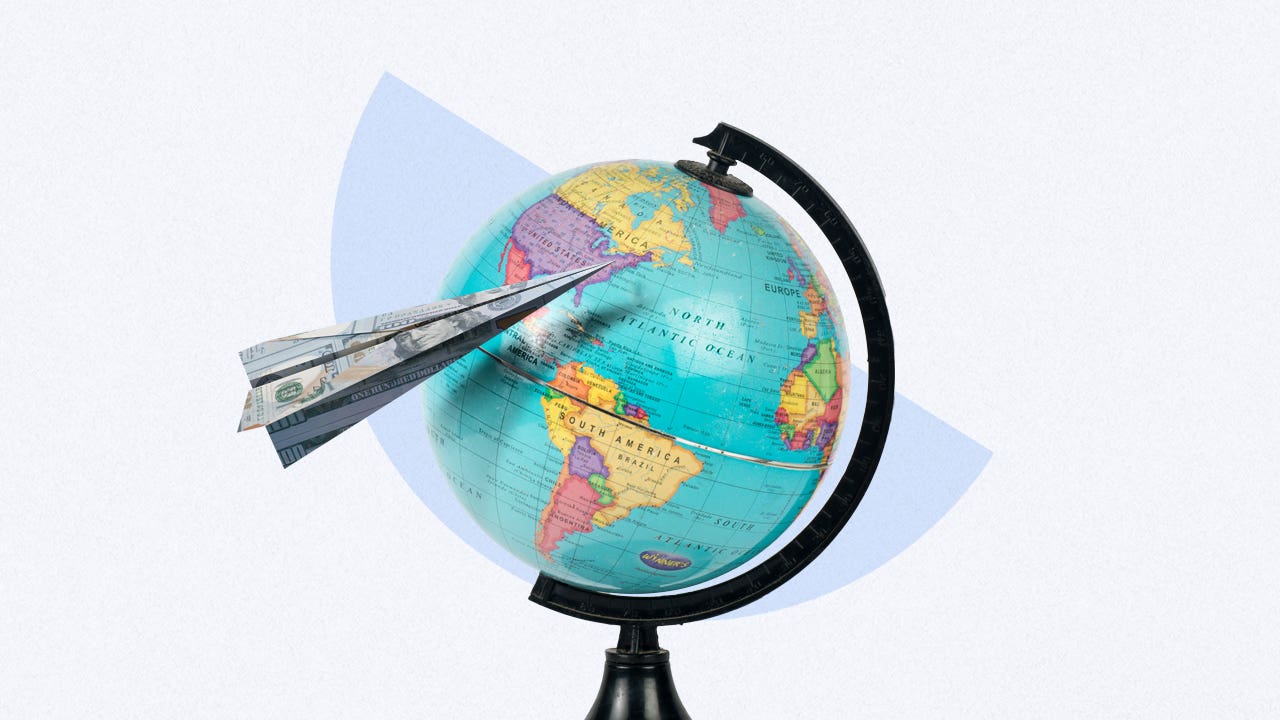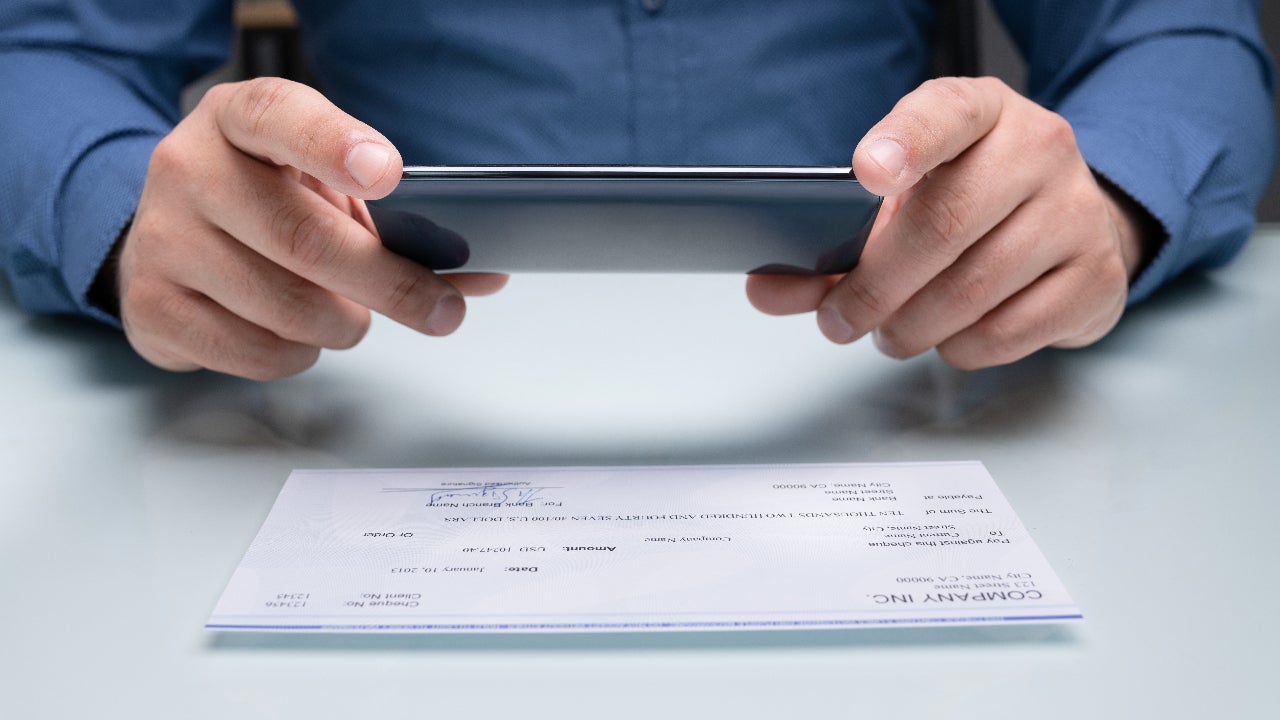How to make an international money transfer

Key takeaways
- Wire transfers are not the only way to send money internationally. There are several other options available.
- Factors to consider when choosing a transfer service include fees, transfer speed, maximum limits, and accepted payment methods.
- It is important to double-check all information when initiating a transfer, including the recipient's account number, currency, and conversion fees.
If you’re looking to send money to a friend or relative abroad, you’ll need to make an international money transfer. Wire transfers are a well-known way of doing so, but they aren’t the only method available to consumers.
When you’re exploring international money transfer options, you’ll want to consider several factors, including fees, maximum transfer limits and how long it takes for the transfer to go through. Here are some of the most common ways to send money internationally and what the steps are for doing so.
Best ways to send money internationally
Comparing international money transfer services
| Method | Fees | Speed | Maximum transfer amount |
|---|---|---|---|
| Wire transfer | $44 for outgoing on average | 24 hours or next business day | Varies by bank from $1,000 to unlimited |
| Wise | $6.42 (may vary by currency) | 1-2 business days | No limit in most cases |
| Xoom | 5 percent + fixed currency fee | Within minutes | Up to $50,000 per day |
| MoneyGram | Usually $1.99 with a debit card (varies by country) | Next business day | $10,000 |
International wire transfer
Wire transfers are a common way to send money abroad. Typically, you can make an international wire transfer through your financial institution or through a third-party service, such as Western Union.
You can usually set up a wire transfer online or at your bank’s branch. To do so, you’ll need the routing number, account number and name of the recipient; some services may also require the recipient’s address.
If you initiate the wire transfer on a business day before the institution’s stated cutoff time, the money may take one to two business days to arrive, but it could take longer. Because the transfer is handled by the financial institution, it won’t be processed during bank holidays or weekends. Wire transfers are one of the faster ways to send money internationally, but they come with higher fees. According to Bankrate’s analysis, outgoing international wire transfer fees average around $44.
Wise
Wise, formerly known as TransferWise, offers a unique way to send money internationally without the high fees of a wire transfer.
The service is essentially an online account that connects you to other accounts around the world. To send money with Wise, you make a bank transfer to the local Wise account for a low fee. Rather than directly moving this money to the receiving country, Wise withdraws the respective amount from its account in the country abroad that you want to transfer to.
For example, say you’re sending $1,000 from the U.S. to France. First, you would enter both your account information and the recipient’s account information on the site. By connecting your bank account, Wise can initiate an ACH transfer for a $1.30 fee, plus a $5.12 service fee, amounting to just $6.42 in fees (this may vary by currency). After the money transfers to the local Wise account, the recipient will get the converted amount in euros from the local account in France.
The speed of the transfer varies depending on which country you’re sending to, but Wise transfers generally take no longer than two business days. Wise also allows you to transfer money from a debit or credit card, albeit at a higher cost.
Xoom
Xoom is an international money transfer service offered by PayPal that functions much like other peer-to-peer (P2P) payment apps. You’ll need a PayPal account to send money through Xoom, but the recipient does not.
Payments through Xoom can be sent from a bank account, debit card, credit card or PayPal balance. Debit and credit card transfers usually have extra fees, though. Otherwise, you’ll typically be charged an international fee of 5 percent plus a fixed conversion fee that depends on the currency of the recipient.
Users also have the option to send money for cash pickup. This means that when you send money to another PayPal user, you can elect to have it available as cash at a convenient location near the recipient, such as a local bank or retailer.
The limit on how much money you can send through Xoom increases based on how much personal information you provide. The baseline limit is $2,999 per day. This increases to $10,000 when you provide a Social Security number or passport. It increases to $50,000 when you provide a driver’s license or passport, and a bank statement or pay stub, as well as answering security questions.
Money transfers with Xoom are usually quite fast, appearing in the recipient’s PayPal or bank account within minutes. However, the recipient may additionally need to transfer that money into their personal bank account if you send it to their PayPal, which can take one to three days. Instant transfers are possible for an extra fee.
MoneyGram
With MoneyGram, you can make international transfers online or in-person. Online, consumers can send money from a credit card, debit card or bank account. In most cases, cash is the only form of payment accepted when transferring money by visiting a MoneyGram agent in person.
Transfers through MoneyGram are inexpensive. With a debit card, the fee is typically $2, but can be higher. The fee may be more for other payment types, and there is a higher fee for its cash pickup service, which allows recipients to get the transferred amount in cash at a nearby location.
The amount of time it takes for the money to get to the recipient’s bank account varies by country. For most countries, it’s available by the next business day.
How to send money internationally
1. Determine what transfer service to use
The four methods outlined above — wire transfer, Wise, Xoom and MoneyGram — are some of the most common. Transfer speed, fees, countries available and accepted payment methods are some of the factors that vary among them.
When choosing between these different transfer methods, consider the following:
- How quickly do you need to send the money? If the transfer is urgent, wire transfer or Xoom could be better options, since they have faster delivery speeds.
- Is it a large transfer amount? Some services have tighter restrictions on how much money you can send internationally. For example, your bank might only allow up to $1,000 with international wire transfers.
- Which country are you sending to? Not all transfer services are available in all countries. MoneyGram, for example, only allows online international transfers to 36 countries, while Western Union, a wire transfer service, is available for almost every country.
- What payment method are you using? Fees charged may vary depending on what payment method you use. If you’re using a debit card, for example, there’s a higher fee for transferring through Xoom, while paying with a debit card is relatively cheap using MoneyGram. Additionally, cash is not accepted by all service types, including Wise.
- Does the recipient need the money in cash? If the money is needed in cash, you’ll have to use a service such as MoneyGram or Xoom, which have an international cash pickup option.
2. Input sender and recipient information
To initiate the international transfer, you’ll first need to provide the transfer service with some basic information. Most services require you to provide the recipient’s account number, routing number and name. With services outside of your bank, you’ll also need to provide your own banking information to connect your bank account.
Some services, such as Xoom, may require you to submit additional identifying documentation to transfer larger sums.
3. Choose the currency and amount to send
Check to make sure you’re sending to the right country with correct currency conversion. Conversion fees may vary depending on which country you’re sending money to.
Often, the fees you pay for the service and for conversion are subtracted from the total amount that you send. Make sure to send enough money, so that the amount that ends up in the recipient’s account is correct after subtracting fees.
4. Complete and track your transaction
Once you send the designated transfer amount, it can take anywhere from a few minutes to several days for it to appear in the recipient’s account. If you’re transferring money for a cash pickup, make sure the recipient knows when and where they can get the cash.
Track your account history to confirm that the transfer was processed, and look out for any additional fees that may have been charged, in case they need to be disputed.
Other considerations for international money transfers
- Understand how exchange rates work and always compare the total transfer costs.
- Avoid paying with a credit card if possible, as it may incur high fees. Using a bank account or a debit card usually results in lower fees.
- Consider the speed of transfer and choose a provider that meets your time requirements.
- Be mindful of transfer limits and choose a provider that can handle the amount you wish to send.
Bottom line
Sending money internationally is an easy process with the various services available today. Keep in mind that even though your bank might be the first place you go to for making international wire transfers, it’s usually the more expensive option. Plenty of nonbank services offer international money transfers for much lower fees and at reasonable delivery speeds.
—Bankrate’s Marcos Cabello contributed to updating this article.






